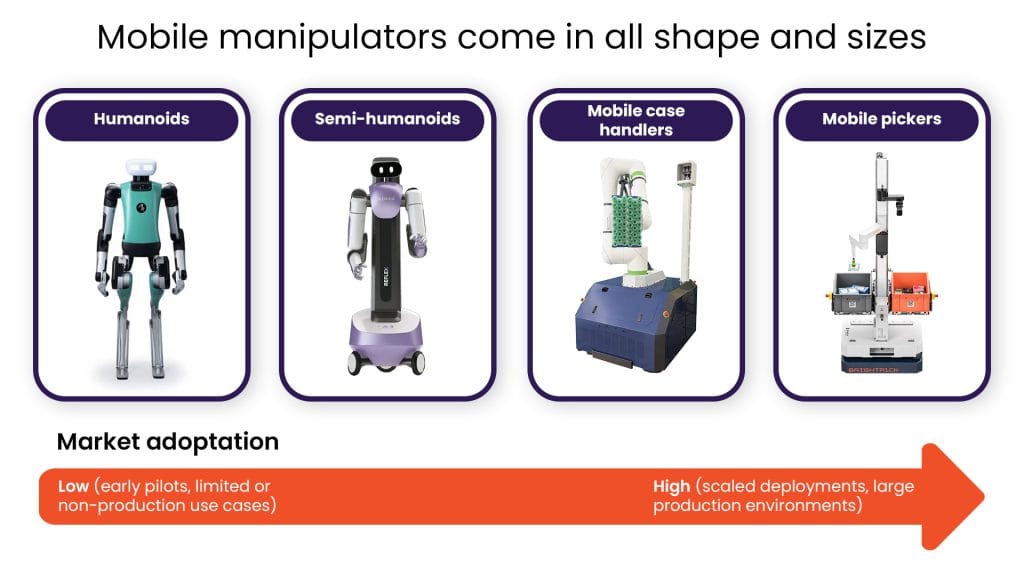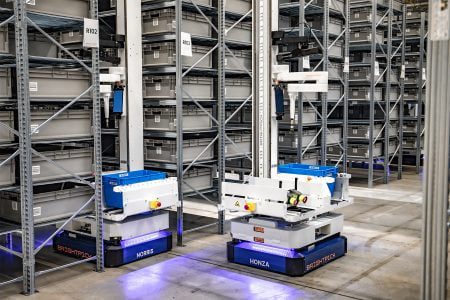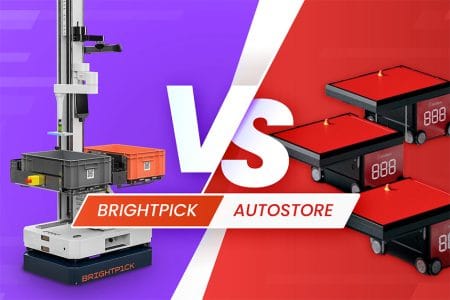Humanoids and beyond: The state of mobile manipulators in 2025
From social media buzz to startup demos, humanoid robots are everywhere in 2025, capturing our collective imaginations with their potential to reshape society.
But while humanoids take center stage, they’re only the flashiest members of a much larger family – mobile manipulators. This broader class of robots is designed to not only move but also interact with and manipulate objects, providing far more automation and adaptability compared to traditional robots. Mobile manipulators include truck unloading robots like Boston Dynamics’ Stretch and mobile pickers like Brightpick’s Autopicker.


Until recently, these robots were stuck in R&D labs and pilot projects. Too expensive. Too rigid. Not quite ready for the complexity of the real world. But that era is over. Thanks to rapid progress in AI, hardware, and design, mobile manipulators are breaking through those limits.
Enabling technologies for mobile manipulators
Several recent technological breakthroughs have made mobile manipulators more practical and accessible than ever before.
1. Lower costs: Prices of robotic arms and machine vision systems have dropped significantly. This has opened the door to more cost-effective automation across industries.
2. Smarter designs: Improved robot form factors and optimized workflows are helping deliver competitive throughput and greater reliability.
3. AI advancements: New Vision-Language-Action Models (VLAs) allow robots to better understand and respond to complex, changing environments.
4. Better hardware: Robotic arms are now more precise, dexterous and compact; actuators offer greater power; and battery technology supports longer operating times without frequent recharging.
Present-day use cases for mobile manipulators
Mobile manipulators are being piloted across various industries but widespread adoption remains limited due to sector-specific hurdles.
In healthcare, safety is a major concern, and the sheer number of edge cases makes consistent, reliable operation difficult. Agriculture faces similar challenges, where current AI models struggle to generalize to highly variable environments. Manufacturing, on the other hand, has relatively few edge cases but demands extremely high throughput and precision – standards that many mobile manipulators still struggle to meet compared to fixed industrial robots.
One industry, however, is moving rapidly ahead: logistics. Here, mobile manipulators are already being deployed at scale for tasks like item picking, tote handling, and truck unloading. And the momentum is only building. New applications such as case picking, palletizing and depalletizing, truck loading, decanting, and packout appear to be not far off, with many showing early signs of feasibility.
Logistics offers a favorable environment for mobile manipulator adoption, thanks to its semi-structured environments, moderate throughput requirements, and strong focus on flexibility. Although reliability is still critical, the sector typically involves fewer unpredictable scenarios than healthcare or agriculture and often places lower demands on performance than manufacturing. These characteristics make logistics a promising domain where mobile manipulators can deliver practical value at scale.
Real results: The largest deployment of mobile manipulators today
Mobile manipulators are moving beyond pilots and proving their value in real-world logistics operations. The largest production deployment to date is at an ecommerce distribution center near Denver, Colorado, where 73 Autopicker robots operate 24/7 to pick thousands of customer orders daily. The system has driven an 83% reduction in labor (from 120 FTEs to 20 per shift) and enables lights-out overnight operations, with robots autonomously picking and buffering orders without human intervention.
Ready to embrace the future of AI? Brightpick offers an easy path to fully automate your order fulfillment.
Get started with Brightpick

